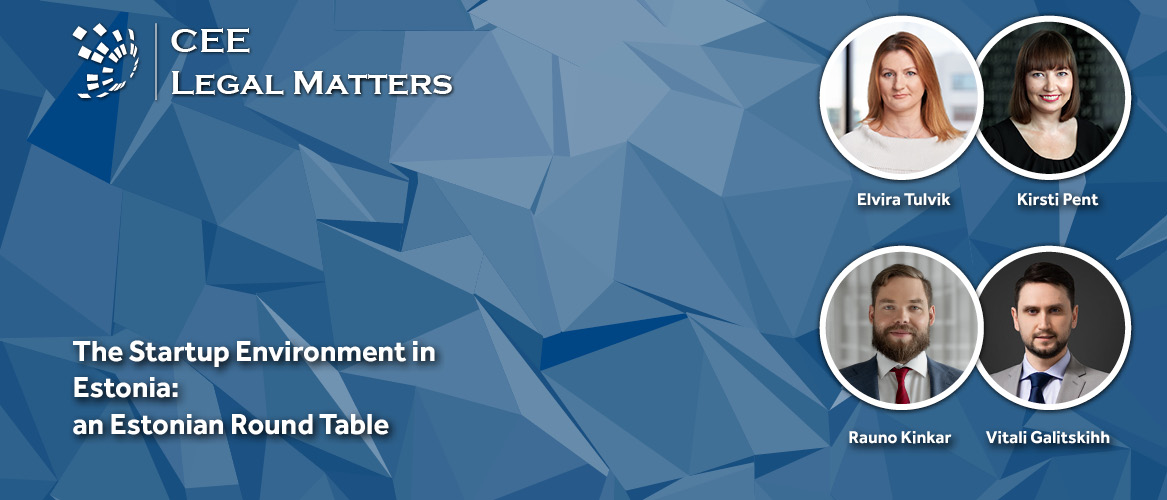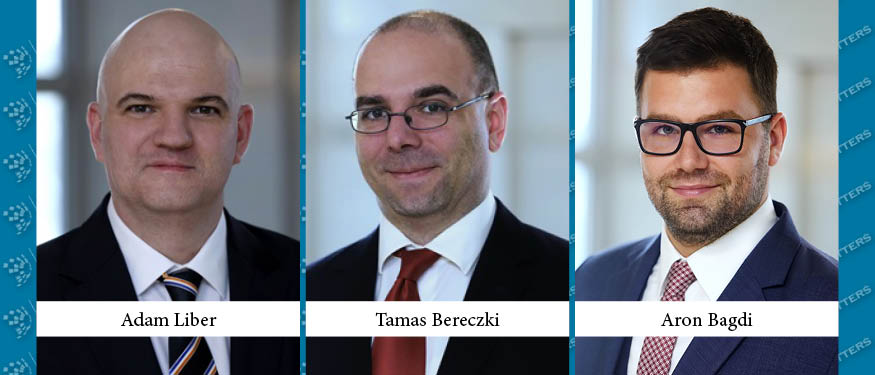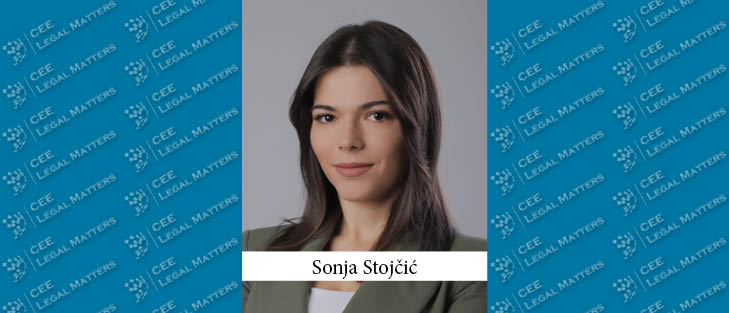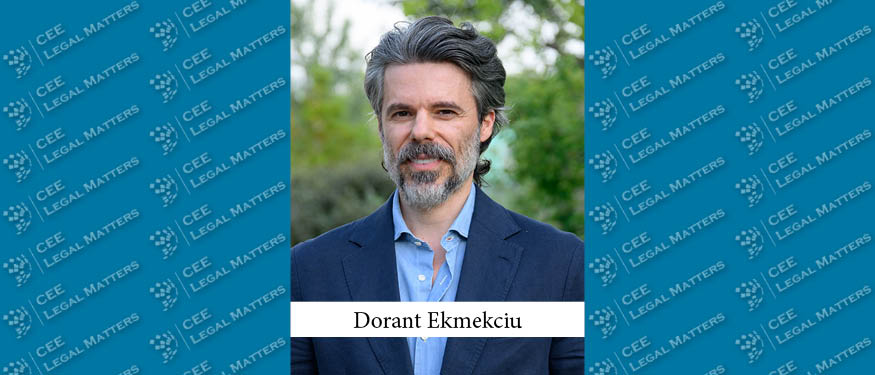On March 9, 2022, four leading Estonian lawyers sat down for a virtual round table moderated by CEE Legal Matters Managing Editor Radu Cotarcea to discuss the current state of the startup environment in Estonia and analyze its main drivers, the local startup ecosystem, and the regulatory environment shaping it.
Participants:
- Elvira Tulvik, Partner, Magnusson
- Kirsti Pent, Partner, TGS Baltic
- Rauno Kinkar, Partner, Lextal
- Vitali Galitskihh, Head of Tallinn office, Ilyashev & Partners
You can also listen to the conversation as a podcast below.
CEELM: Estonia has the most unicorns per capita in Europe, and Estonian startups have raised more than a billion dollars in 2021. Is this performance reflective of the strength of local companies or structural market support?
Galitskihh: You are right, there are a lot of startups in Estonia that are unicorns already. There were six of them last year and seven already this year. The number of startups is growing, mainly because of the structural market support and the opportunity to raise money. The general environment in Estonia is also supporting it with a lot of young people focused on technology and the internet. IT companies are the future for them, and for the state as well. Because of that, the number of unicorns is growing rapidly. People around the world are seeing Estonia as a good place to invest money and these local companies end up infusing capital into the market as well. I don’t know many other countries in the world with similar conditions – maybe Israel is up there as well. There is considerable support from the state as well – already in the 90s, the government had a policy of supporting IT companies to be present in the country and to grow.
CEELM: Do you agree with what has been mentioned above, and as a follow-up, what nurtured investors’ trust in the market?
Kinkar: I agree with what Vitali said. At this point, we have the highest number of unicorns and startups per capita. A combination of factors contributed to that, including a digital governance system, e-residency, ID card, and the opportunity to establish and run a company online. In addition, decisions that were made by the government 20 years ago regarding investing in IT education contributed to that. The Tiger Leap program, which was launched in schools seems pretty basic right now. In contrast, at the time it was definitely not basic and led to us having very good IT specialists now leading the ecosystem of startups. The good political decisions that date way back, a good e-governance system, a favorable tax regime in terms of not having a corporate income tax, and easy access to startup visas have definitely played the role in the process.
CEELM: Since you mentioned digital governance, is it a result of people being pushed towards IT, or did IT directly incentivize startups?
Kinkar: I would say it is a combination of both. It is similar to a “chicken and egg” situation. The government saw a business opportunity in the IT sector and aimed to address hinders to foreign investors to enter the Estonian market. At the same time, once there was an effective system, people made more investments, validating the system in the first place. I guess it shows good insight from the policy maker’s side. I’m not sure whether they foresaw that the effect would be this profound or if they were throwing a dart in the dark, hoping it would land, but it did.
Pent: I agree that the environment plays a big part in Estonian startups’ success, but I also think that the environment has changed. Estonia might have been a front-runner in terms of licensing cryptocurrency companies, but recently, we are regulating more. We have some specific sectors where we might have a better reputation than it actually is. However, in general, the environment is very helpful for startup companies. We have specific legislation also targeting immigration issues, such as startup visas for founders. The past success of the unicorns is also a factor that contributes to current startups being able to raise funds.
Galitskihh: I disagree that e-residency laws have a huge impact on this, as people who get e-residency are usually not part of unicorns. Mostly, our unicorns are from Estonia, run by local people. The government’s policy and worldwide marketing had a rather big part to play.
CEELM: As mentioned, past successes have played a role. What was the impact of Estonia’s original “golden child” – Skype?
Tulvik: Skype was such a long time ago, we have a whole generation after it. This created a very common attitude in Estonia, that “if we could do this back in 1997, then what is it that we cannot do in 2021.” There is also a bigger picture, that is not related just to the government and startups. First of all, Estonian children have historically been quite good at science, as the PISA test showed, meaning that Estonians are not afraid of numbers or technology. Secondly, Estonian society is very horizontal, from the grassroots to the very top levels of the government. In such a small country, even if people are not related, they know each other, therefore, the lines of communication are short and extremely transparent. That, in turn, is a great asset for the VCs to see where they are investing money. Investments are quite secure, and if there is a doubt, it is usually a matter of a maximum of two phone calls to figure things out. This culture has been cultivated in the past 30 years since Estonia’s independence, and we have had at least two generations for whom it is natural to be in this state.
Pent: I agree that a go-getter attitude is a contributing factor. In addition, Skype had a very direct impact on the Estonian startup community, as its founders sold it and used the proceeds to launch VC funds, which now are investing in other startups. It is possible that even the third generation of startups are using money that Skype generated. They are also mentoring other founders, as well as in terms of financing startups, Skype contributed directly.
CEELM: How is the local VC landscape? Would you assess it as more mature than most of CEE, for example, and if yes, why?
Kinkar: I think it would be a stretch to say that the VC landscape is more mature compared to most CEE countries, considering the size of the market. Compared to other CEE countries, our market is extremely small. However, I think that the success of startups had an inherent looping effect. The market analysis shows that the funds generated by those successful startups tend to end up back in the flow of new ventures. Having those 7 unicorns have directly led to stronger VCs in Estonia and having their funds at disposal. Despite the fact that the market is fairly small, the VCs are extremely successful in that regard.
Tulvik: When we talk about the size of the market and VC investments, it is quite common to see the Baltics as a single market. If we separate Estonia from the Baltics statistics, we see that with regards to VC involvement, it tends to be the smallest of the three. This is a beauty and a tragedy of being a small market, as even though it is very transparent and horizontal, investment opportunities are still limited due to its size. In addition, it is a common trend that as soon as a unicorn emerges, or a startup scales up to a certain level, they tend to move out and go to London, Luxembourg, Silicon Valley, etc., as they do not fit in the market anymore. We lose the most successful startups fairly easily.
CEELM: Startup flight might not be a new story in CEE, but what are the main elements influencing the Estonian players?
Galitskihh: This is an important question, as startups are not connected to local markets. These companies work in Europe or worldwide. They tend to move to London or the US, as they can raise a lot of money there. We also have a shortage of people who can create such companies, as they tend to move to other countries. Huge companies, such as Microsoft, are in other countries, but Estonia is a great country for startups.
CEELM: You mentioned the Tiger Leap program, initiated by the government a decade ago, or more. What is the government doing now to support the ecosystem of startups?
Pent: There have been some legislative changes in recent years, targeting, for example, the lack of a workforce. Immigration is a tricky question in this part of the world in general. There is specific legislation for startups, including providing visas for those who are outside of the EU. A couple of years ago commercial law changed to provide convertible instruments for startups. The government also has a body called “Startup Estonia” to support the community, which defines, inter alia, which startups are eligible for founders visas. However, certain players, such as fintech companies rather have issues with the ever-changing laws. The regulator is maybe not as open to discussing some new business model. However, there have been improvements in the last year, and in general, the government is rather helpful with the startups.
CEELM: Earlier you mentioned a backtrack with regards to legislation. Is that what you were referring to?
Pent: That is very specific for cryptocurrency companies. It has been suggested that 40% of all crypto companies are registered in Estonia. After some time, it was considered a major AML risk. Regulators received quite a lot of tips from other countries in the EU. In a way, it seems that the political approach has changed, however, companies are still interested to operate in Estonia. Especially, in light of the war that broke out in Europe, the Estonian Prime Minister has said that we need to look at crypto regulations to close the loopholes so that the funding won’t go through them to sanctioned countries. In some sectors, regulations are amended frequently, which does not contribute to the stability of the system.
Tulvik: AML, in a bit of a wider sense, has been a problem in many ways over the past several years, ever since the famous Danske Bank money-laundering scandal. Of course, there is a very direct link to crypto-related sectors. We have also seen that the banking sector crunched down and remained immobile by the establishment of draconian AML requirements. At this point, it is virtually impossible for non-residents to open a bank account here. This has been a huge hamper for business, investments, and other aspects. This relates to general government involvement, as we have seen a lot of moving around two poles, instead of finding a middle ground. On the one hand, the financial supervisor is extremely passive, but on the other hand, we have overnight draft legislation allowing the shutting down of 80% of the businesses based on alleged involvement in money laundering. Philosophically, both of those approaches are correct, but I would like to see the government finding a middle ground by combating money laundering and striving for transparency without putting a hamper on any sort of finance movement in this area. This has been somewhat lacking, but of course, there’s always something else on the table – the first COVID-19 and now the war and elections.
Kinkar: It’s not just about crypto, but web3 in general. The startup scene in that field is growing. The economic opportunities in the Estonian startup scene are quite obvious. At the same time, the Estonian government is changing regulations very quickly, in a very strict manner. The direction in which it is evolving, in my opinion, is a good one. The first of two draft laws was passed a week ago, coming into force on March 15. That will impose new and clear regulations for web3 and crypto companies operating in Estonia, and establish share capital and licensing requirements to adhere to. This might lead to stabilization and create a lot of opportunities. The field will become more respected, as there will be real companies operating in Estonia, investing real money. I believe, that the direction we are moving toward is correct, and the only challenge is to stop at the right moment and not impose regulations until everyone is out of the market. Especially given the situation we are in now, the economic sanctions on Russia among other things, have shown that there is a place for an alternative financial system, that can be used in the context of conflict. I think that web3 is not going away from Estonia, and there is a potential, that the government regulations will become more strict. We are still frontrunners in CEE, setting up a stable legal environment, where you can safely invest capital and set up a company knowing that I can do business here for a long time. More generally, when we talk about what the government can or should do with regard to the startup community, it ties to the web3 matter. The government needs to provide a clear understanding of what the AML regulations are and provide clear guidelines.
Galitskihh: I agree with my colleagues. The government was neutral maybe 20-25 years ago. These are new regulations and as a result, crypto companies are moving to Lithuania or other countries. We still don’t have any solutions to banking problems, as in Estonia it is not possible to run a business without it. We have had this problem for 4-5 years now, but the government did not address it, therefore, I feel very pessimistic. I hope new regulations on cryptocurrencies will be more clear in general.
CEELM: You mentioned a supportive tax regime for startups in the country. Can you elaborate?
Tulvik: When we talk about both tax incentives for startups and the general influence of the Estonian tax system on startups for years, it is crucial to mention that Estonia usually sells itself to foreign investors as having a great tax system. It is indeed wonderful, as it is quite simple and transparent. The way it works is that companies’ profits are taxed at the moment of their distribution, not the moment they are earned. It supports entrepreneurship, but when it comes to startups, it really does not help them. On average, the question of profit does not even arise in the first 3-5 years of startups' existence. Startups are not worried about profit distribution, but about payroll taxes. Here we lose big, as payrolls are taxed heavily. The employer is paying 33% social tax on top of everything, including income tax. There is absolutely no special tax regime for startups. Accordingly, the big picture regarding taxes is wonderful, however, the startup regime is disadvantaged. There’s another aspect to it, if we look at the worldwide BEPS initiative, there is an ongoing fight against profit shifting, which is right in its philosophy. However, the fact is that BEPS will be adopted one way or another in the coming years, and it is not clear how or whether the Estonian tax system will going to survive. There is this uncertainty on top of everything, on what our tax system will look like three years from now. I understand the limitations placed on the government as well, as they have as much information we have now, but there is a shoutout to them to actually start planning for businesses and emerging startups, on how they are going to deal with that.
CEELM: To wind down the conversation, what would be one element you would like to see a change to better support the startup scene?
Pent: As I mentioned, Estonian AML legislation needs to be improved. The difficulty here is a risk-based approach, meaning that the obliged entity needs to define its own risk appetite and the features that go with it. It is ultimately the task of the regulator, considering the scandals that we had recently. Unfortunately, I am not very optimistic about more leniency in the future, but we would wish that the regulation would at least become more clearly defined and the regulator's expectations would be more obvious.
Kinkar: My wish list is probably less realistic and most likely could not be solved by the Estonian side. Especially with regards to startups, the tax exemptions mechanisms allowing stock options are rather limited. They become extremely expensive and convoluted, as startups usually employ a number of people living in different jurisdictions. In that case, companies would need local counsel in every country and to apply for tax residency in each of them. This shows up in statics as well, as compared to the US, the percentage of employees getting option programs across the borders, the number is much lower in the EU, as it is rather complicated and expensive to do so. Some Estonian startups, for instance, SaltoX, are operating in the field of tokens. It is hard to solve from the Estonian side, as it involves amending legislation at the EU level. However, I think if we want to have a favorable regime for employees, the regime should be different.
Galitskihh: As I mentioned, I feel very pessimistic right now. I hope that the government resolves the bank account-related problems. This seems to be the main problem right now, as if you don’t have a bank account, you don’t have a business.
Tulvik: If I had a list of ten things that I could improve, eight of them would be related to AML, and the remaining amendments would relate to immigration and the conflict between the requirement of local presence and the fact that startups are online and global. I would also add tax-related issues. As mentioned before, with regards to option plans and payrolls, there could be an improvement.














